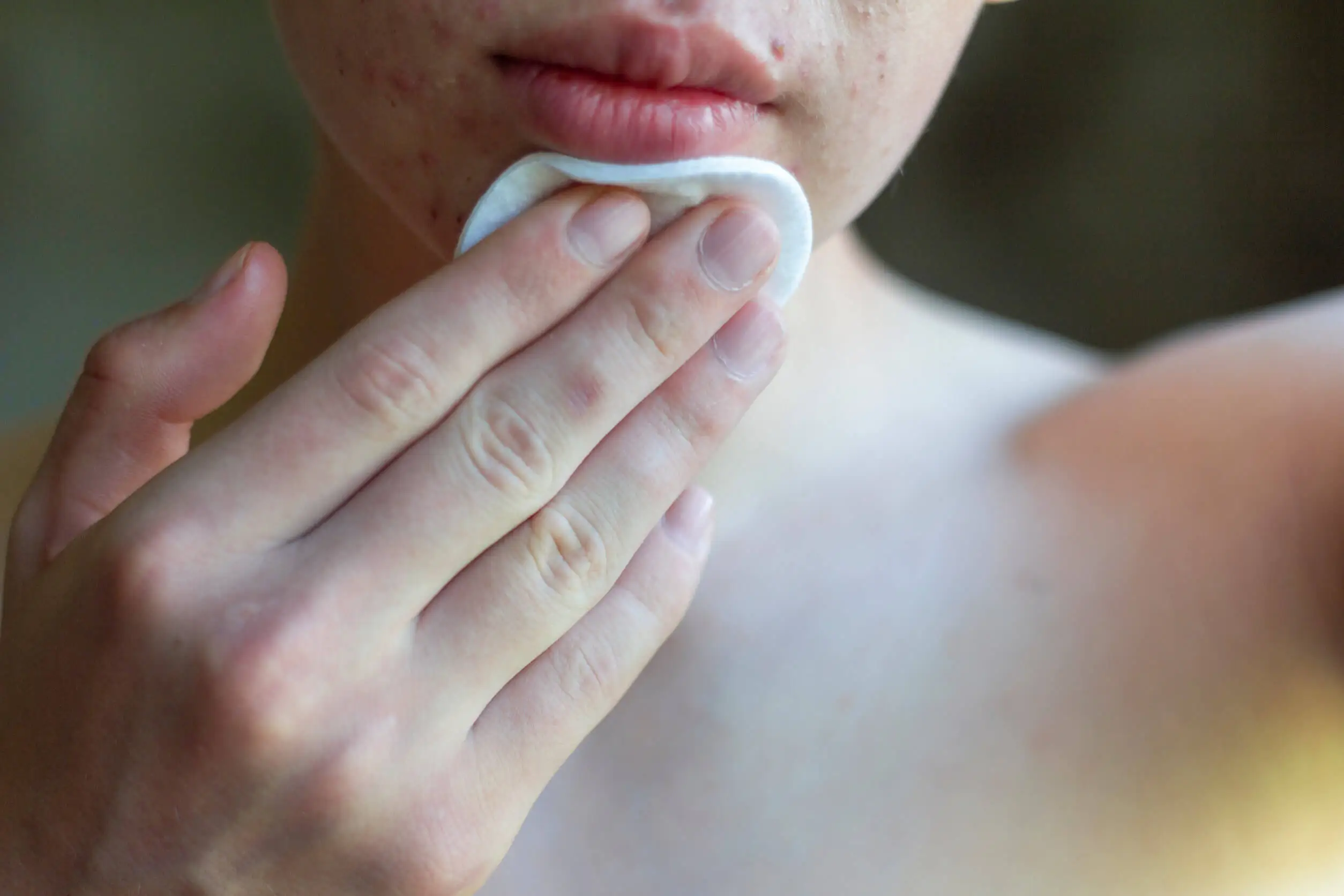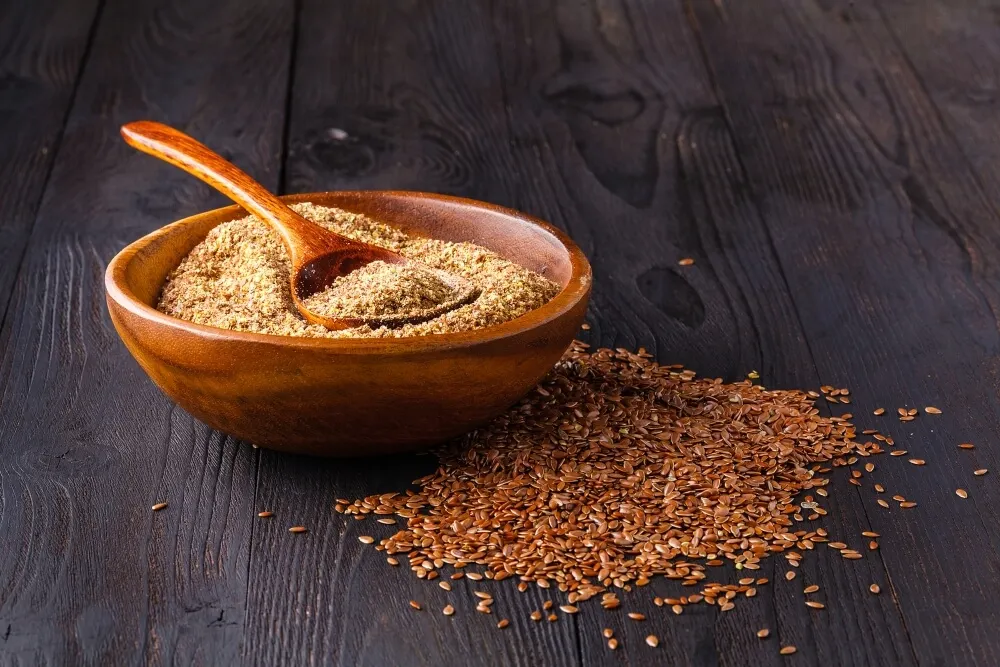Comedogenic Oils to Avoid If You Have Oily Skin


Reviewed and approved by the nurse Leidy Mora Molina
Skin that’s prone to pimple breakouts needs products that don’t worsen the condition. The more natural the options, the lower the risk of clogging pores. Comedogenic oils and non-comedogenic oils stand out among the organic alternatives.
These formulas are intended to moisturize, nourish, and repair the skin. To make them, herbalists and the cosmetic industry use plants, fruits, seeds, etc.
However, they don’t always cause good reactions. When the complexion is oily or acne-prone, special attention should be paid to the composition of facial oils.
What are comedogenic oils?
Comedogenic oils are substances that easily clog pores and can cause inflammation or skin allergies. A scientific study by Dr. Fulton classifies comedogenic in the following levels:
- 0 or non-comedogenic: doesn’t clog pores
- 1 or very low: there’s a small probability of pore clogging
- 2 or moderately low: in most cases it shouldn’t clog pores
- 3 or moderate: depending on the skin type, it may clog pores.
- 4 or fairly high: with a tendency to clog pores in most people.
- 5 or high: clogs pores and very few skins tolerate it.
Oils corresponding to the last 3 steps promote bacterial growth. Comedogenic formulas are food for these microorganisms and complicate dermatological conditions.

Acids that influence the comedogenic effect
Acne is a process that inflames the pilosebaceous unit, affecting the face, chest and back. Treating it requires a medical evaluation with the prescription of oral and topical drugs.
In addition, skincare routines are designed to prevent outbreaks and maintain good health. This practice includes oils used for cleansing and nourishing the dermis.
Depending on the purpose of these products, omega fatty acids such as oleic, linoleic, linolenic, gamma-linolenic, palmitic, palmitoleic, palmitoleic, eicosenoic and stearic are added in the preparation. Each has properties that moisturize, regenerate, deflate, soften, repair damage, and increase elasticity.
However, skin type, diseases, water consumption, and environmental factors combine with the ingredients of some oils to produce comedones.
Comedogenic oils contraindicated for oily skin
Linoleic acid deficiency creates sebum with oleic acid that seals pores with blackheads or whiteheads. To prevent blackheads, it would be appropriate to use substances whose comedogenic components are below level 3.
The following are oils that are definitely not beneficial for oily skin.
Avocado
The comedogenic classification of avocado is 3. Although it’s recommended for dry skin, due to its texture and tone, it can clog pores. It contains 15% linoleic acid, 0.8% linolenic acid and 65% oleic acid. The degree of the last component predisposes to breakouts.
Soy
Soybean oil is antioxidant, but intolerable to most skins. It’s in the comedogenic category 4 to 5. It contains 50% linoleic acid, 24% oleic acid and 7% linolenic acid.
Coconut
Coconut is an ingredient that softens and brightens dry skin. It’s also used to help treat psoriasis, eczema, and atopic dermatitis. However, its oil is believed to be harmful to oily skin.
It’s on the comedogenic scale 4, with a composition of 0.2% linolenic acid, 5 to 8% oleic acid, 1 to 3% linoleic acid and 45 to 52% lauric acid.
It’s this last acid that divides opinion, as some research reveals that high percentages of lauric acid significantly decrease the growth of acne-causing bacteria. Consult a dermatologist when deciding whether to include coconut oil in your beauty routine.
Wheat germ
Few people tolerate wheat germ oil on the skin. Its topical use means a surefire outbreak. Its comedogenic grade is 5; made with 55% linolenic acid, 7% linoleic acid and 14% oleic acid.
Being rich in vitamin E, wheat germ substances speed wound healing, so you may consider them for other purposes, away from the face.
Carrot seed
This vegetable is high in oleic acid: 68.4%. Added to 0.2 % linolenic acid and 20.8 % linoleic acid, carrot oil doesn’t work on complexions with acne. Its comedogenic category is 4.
For skin that tolerates it, this product helps to delay the signs of aging, soothe irritations, and gain elasticity.
Camelina
Although camelina is ideal as an anti-aging treatment and skin barrier repairer, its comedogenic level ranges from moderate to quite high: 3-4.
It’s an oil that’s very likely to clog pores. It’s prepared with 19% oleic acid, 12% eicosenoic acid, 16% linoleic acid, and 38% linolenic acid.
Palm seed
Palm oil is of comedogenic classification 4, and is therefore contraindicated for oily skin. The opinions and effects of this product are similar to those of coconut oil.
It moisturizes, softens, and brightens dry skin, but not exactly on the face. Palm kernel has 48% lauric acid, 2.3% linoleic acid, and 15% oleic acid.
Flaxseed
Flaxseed’s high comedogenic level places it in category 4 of Dr. Fulton’s chart. It isn’t tolerated by most skin types.
Those with dry skin can take advantage of the benefits of lignans, omega-3, minerals, and vitamins. The formula comprises 59% linolenic acid, 17% linoleic acid and 15% oleic acid.

Cotton
In comedogenic range 3, cottonseed oil isn’t too recommended for oily skin. It tends to generate breakouts.
It isn’t very popular, but, in cosmetics, it’s suggested as a lipid barrier restorer and for providing vitamin E. Its oleic acid concentration ranges from 19 to 30%, linoleic acid from 42 to 54%, and linolenic acid 1%.
Non-comedogenic oils ideal for oily skin
Non-comedogenic oils, those from 0 to 2 on Dr. Fulton’s chart, are useful if you suffer from acne. They’re characterized by their emollient properties, and their penetration to repair damaged cells, erase marks, reduce inflammation, and regulate sebum production.
Argan, sweet almond, neem, and cocoa are excellent ingredients for oily skin. You can include the one that suits your needs in your facial cleansing, but be sure to remove the residue so that they don’t affect the pores in the long run.
All cited sources were thoroughly reviewed by our team to ensure their quality, reliability, currency, and validity. The bibliography of this article was considered reliable and of academic or scientific accuracy.
- Fang J-Y, Gallo R, Huang Ch.M, Kao M, Nakatsuji T, Zhang L, Zouboulis C. Antimicrobial property of lauric acid against Propionibacterium acnes: its therapeutic potential for inflammatory acne vulgaris. J Invest Dermatol. Estados Unidos; 2009. https://piel-l.org/blog/wp-content/uploads//2010/04/Antimicrobial-Property-of-Lauric-Acid.pdf
- Fulton J. Comedogenicity and irritancy of commonly used ingredients in skin care products. J. Soc. Cosmet. Chem. Vol. 40. pp. 321-333. Estados Unidos; 1989. https://insolitbeauty.com/documentacion/Comedogenicidad%20e%20irritacion%20de%20los%20ingredientes%20de%20uso%20comun%20en%20productos%20para%20el%20cuidado%20de%20la%20piel.pdf
- Guía para pacientes con acné. Academia Española de Dermatología y Venereología. Fundación Piel Sana. https://aedv.es/wp-content/uploads/2021/05/Gui%CC%81a-pacientes-con-acne.pdf
This text is provided for informational purposes only and does not replace consultation with a professional. If in doubt, consult your specialist.








